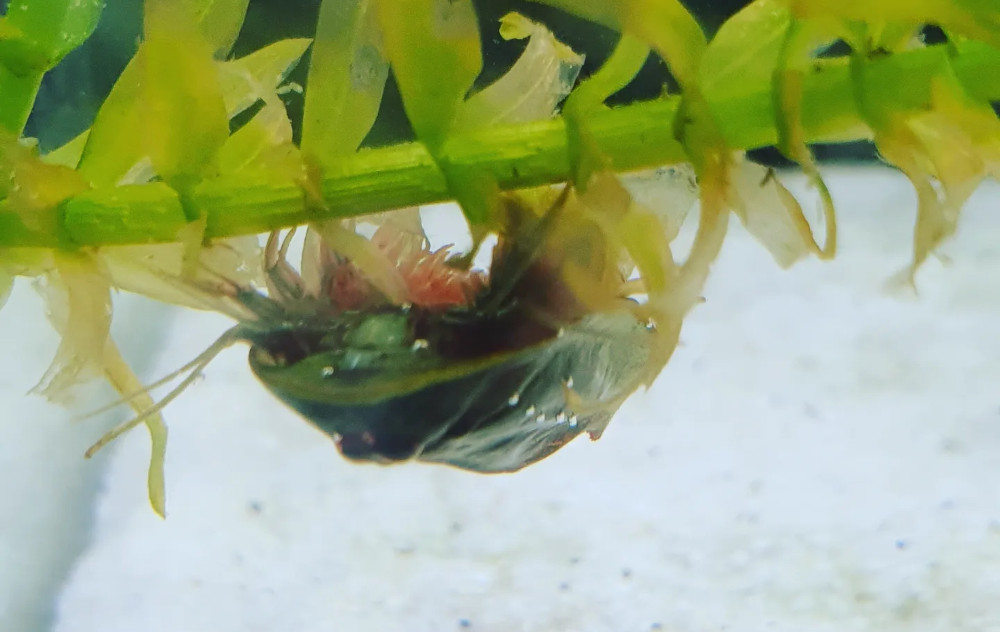Guide
Triops australiensis Ayers Rock Green – The green treasure from the heart of Australia
If you are looking for an unusual Triops species that not only impresses with its appearance, but also with its fascinating origin and behaviour, then the Triops australiensis Ayers Rock Green is just right for you. This special species of Australian prehistoric crayfish brings life to your aquarium – with a touch of exoticism and plenty of character. In this blog article, you can find out why the Triops australiensis Ayers Rock Green is so special.

Triops australiensis Ayers Rock Green: What are Triops australiensis?
Triops australiensis is a species from the Notostraca family and is one of the oldest living animals in the world today. Their ancestors swam through fresh waters over 200 million years ago – long before dinosaurs walked the earth. They have hardly changed over millions of years, which has earned them the nickname ‘living fossils’.
The Ayers Rock Green variant is a colourful species that bears its name for a reason. Its bright green colouring and its origin from the vicinity of the world-famous Uluru (also known as Ayers Rock) make it a real eye-catcher among the Triops species.
Triops australiensis Ayers Rock Green: Origin and habitat
Triops australiensis is – as the name suggests – native to Australia. The animals are mainly found in temporary bodies of water that form after rainfall in the otherwise dry landscape. These pools often only exist for a few weeks or months before they dry out again. The animals have adapted perfectly to these extreme conditions.
The Ayers Rock Green species was discovered in the vicinity of Uluru – a region known for its spectacular landscapes, red sandstone formations and unique habitats. Here, after rare but intense rainfall, small pools of water develop in which the Triops australiensis hatches, grows and reproduces in record time.
Special features of the Ayers Rock Green species
What makes this species so special is its striking green body colouring, which contrasts with the rather brownish-transparent appearance of many other Triops species. The intense green colour is particularly striking under LED light or in good daylight – a real eye-catcher in any rearing tank.
In addition to the colour, this species also differs slightly in its behaviour: They are considered to be particularly active, curious and keen to feed, which makes them very attractive, especially for beginners to breeding Triops.
Keeping them in the aquarium – how it works
You don’t need a large high-tech aquarium to breed Triops australiensis Ayers Rock Green. A simple breeding set or a small nano aquarium is completely sufficient. Here are some tips for successful breeding:
1. The right water
It is best to use distilled water or still, non-carbonated mineral water. Tap water is often too calcareous or contains substances such as chlorine, which can harm the delicate eggs. Make sure the pH value is between 6.5 and 7.5.
2. Temperature
Triops australiensis prefers warmer temperatures. The ideal temperature is 24 to 28 °C. A small heating mat or a heating rod can help to keep the temperature constant, especially in cooler months.
3. Lighting
As this Triops species comes from a very sunny region, it enjoys plenty of light. An LED lamp with a daylight spectrum (approx. 6,500 K) not only helps the animals to orientate themselves, but also supports plant growth if you want to use plants.
4. Feeding
In the first few days after hatching, special rearing food for nauplii is sufficient. Later on, you can feed them crushed food tablets, frozen food, organic vegetables (e.g. courgettes, spinach) and even small insects. It is important that the food sinks to the bottom quickly, as Triops are bottom dwellers.
Life cycle: From egg to prehistoric crab
Triops australiensis has a rapid life cycle. After placing the breeding eggs in warm water, the first nauplii often hatch after just 24 to 48 hours. In the following days, the animals grow at an impressive rate – they double their size almost daily!
At around seven to ten days, they are sexually mature and begin to produce new permanent eggs. These eggs can be dried and reused as required – a natural cycle that ensures the survival of the species in nature.

Why should you breed Triops australiensis?
Apart from the obvious fun of observing these prehistoric creatures, there are many good reasons why breeding Triops australiensis is worthwhile:
- Learning factor: Ideal for children, schools or science enthusiasts.
- Fast results: You don’t have to wait weeks for visible changes.
- Little effort, lots of fun: easy to care for and fascinating.
- Scientific interest: You will gain an insight into biological processes such as metamorphosis, reproduction and adaptation to extreme environmental conditions.
Triops australiensis Ayers Rock Green – Conclusion
Triops australiensis Ayers Rock Green is more than just an extraordinary prehistoric crustacean – it is a living witness to time, a biological wonder and a real eye-catcher in any aquarium. So if you fancy experiencing a little piece of prehistoric times in your home, why not try breeding this fascinating Triops species? With a little preparation and patience, you will be rewarded with a fascinating experience – and perhaps even the next generation of small prehistoric crayfish.